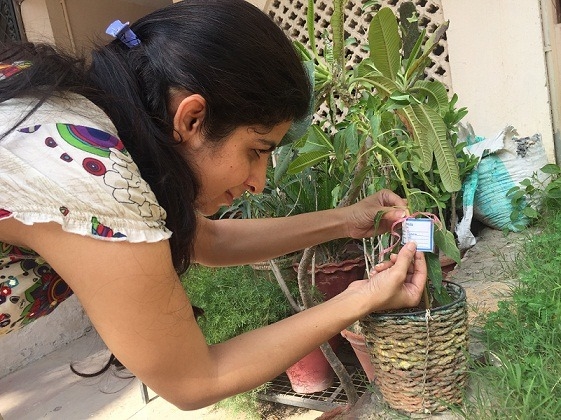
How I took my baby steps to grow my own vegetables!
3 Jun 2016 | 4 min Read
Kanika Manaktala
Author | 10 Articles
With a plant crazy mom, who always amazed onlookers with the green area we had in a first floor house, gardening came naturally to me. When I had a house of my own, I took my passion a level further and started trying my hands at growing vegetables. The journey has been full of amazing discoveries so far.
With the amount of chemicals present in each food material these days, knowing how to grow your own food is a quintessential concept these days.
So with guidance from ‘go-green’ friends and the internet, I got equipped enough to start gardening in pots. Sharing these insights if you want to take a ‘green’ pledge this year –
Soil preparation
The most appropriate soil mixture consists of equal parts of garden soil, coco peat and vermicompost.
Garden soil should be smooth and free of lumps, preferably brought from a nursery and not construction sites.
Coco peat is a byproduct of the coconut fruit, balances the ph and lends a great texture to the soil.
Vermicompost is obtained as a result of the decomposition of the organic/kitchen waste by earthworms. It is extremely nutritious for plants and is highly recommended to be added to the soil.
The baby step
I started with greens as they are easy to grow and left me motivated and curious for further trials.
I sowed spinach, fenugreek and coriander seeds in shallow pots. The north Indian winter played perfectly in the background resulting in lush greens for my kitchen. It was just enough to feed a small family like ours.
These green-leafy veggies need moderate sun and moderate water to grow well. Timely pruning helps them spring up again within a week or so.
I was a successful beginner now. I took the next step and sowed some other winter seeds like beetroot, radish, carrot, capsicum, broccoli, cauliflower etc. I must admit, it was easier said than done. The capsicum had to be protected against the severe winter. This is the major advantage of pot gardening that one can shift the pots to more favorable weather conditions around the house. Radish and capsicum showed up in a few months and left me excited like a new mother. Some of the others too showed great foliage, but without fruit.
As a person, I emerged to be a more and more careful observer in the process of going green by myself.
Summer approached and I was ready to sow the summer seeds.
I chose the non-fussy gourd family to start with – The bottle gourd, the ridge gourd and the bitter gourd. They sprung up beautifully, and were ready to climb up the walls in a few weeks. With each shower, they looked greener and taller than ever. But the flip side is that they get infected easily. Prevention works better with them as cure is very difficult.
A decoction made by boiling neem leaves sprayed regularly is one of the best methods to keep them healthy. I was blessed with some healthy bottle gourds and a few bitter gourds in the last summer.
Something that I have been doing for some time is that I simply throw a spoilt tomato in a pot rather than a dustbin. And voila!!! A huge number of seedlings spring up if I am lucky enough. The last time it happened, I let them grow to a four-inch height and then transplanted them individually to separate pots.
Tomato needs a lot of calcium to grow well, so all my egg shells and banana peels go to my tomato plants, crushed into bits. In addition, I also supply buttermilk to them once every few days. Buttermilk acts as a disinfectant too.
Meanwhile, the more I rummage through the soil, the more I learn. Just like parenting, gardening has its share of joy and moments of disappointment. To keep going, I have set some rules for myself – Never get disappointed, Look at my plants with a lot of love and Be Patient.
If these tips seem useful, set up your own little kitchen garden and feel freshness, joy, good health and love on your plate all at once!
Happy gardening!!!
Source for Images: All pictures in this article are original and belong to the author. Reproducing them in any form without the permission of the author will not be allowed.
A


Related Topics for you
Suggestions offered by doctors on BabyChakra are of advisory nature i.e., for educational and informational purposes only. Content posted on, created for, or compiled by BabyChakra is not intended or designed to replace your doctor's independent judgment about any symptom, condition, or the appropriateness or risks of a procedure or treatment for a given person.
